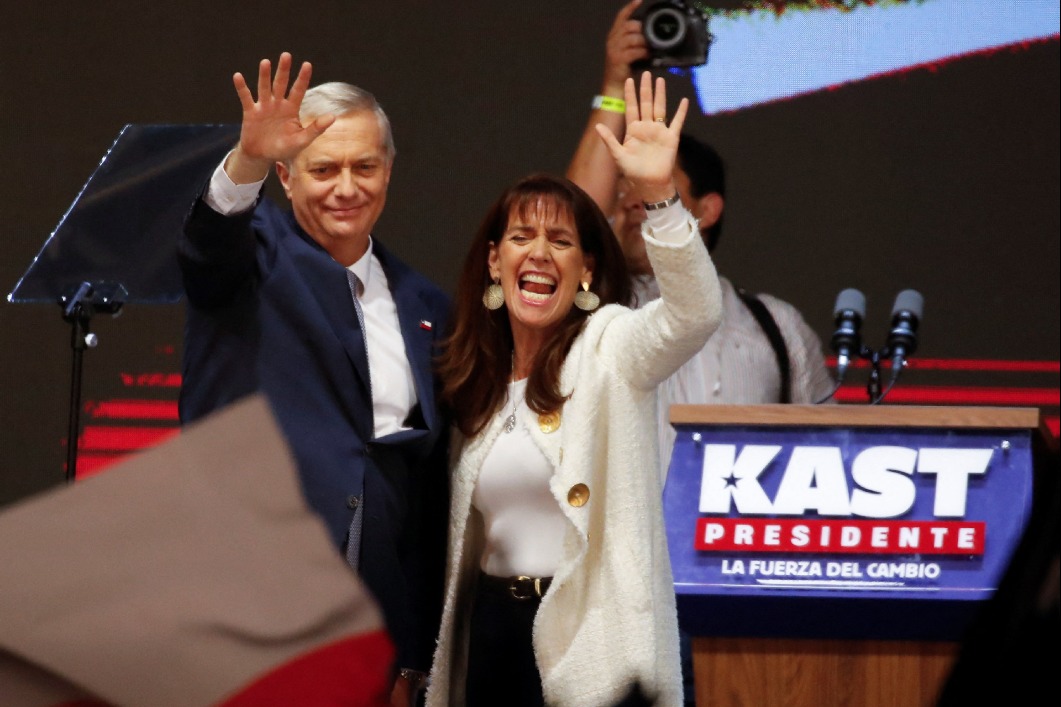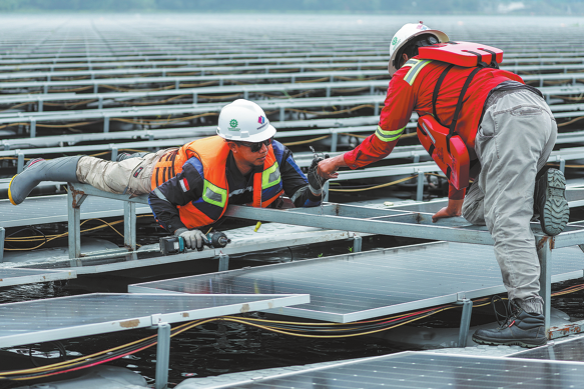Fed boosts benchmark rate for third time this year

WASHINGTON ?— The Federal Reserve is raising its benchmark interest rate for the third time this year, signaling its confidence that the US economy remains on solid footing 8 years after the end of the Great Recession.
The Fed is lifting its short-term rate by a modest quarter-point to a still-low range of 1.25 percent to 1.5 percent. It is also continuing to slowly shrink its bond portfolio. Together, the two steps could lead over time to higher loan rates for consumers and businesses and slightly better returns for savers.
The central bank says it expects the job market and the economy to strengthen further. Partly as a result, it foresees three additional rate hikes in 2018 under the leadership of Jerome Powell, who succeeds Janet Yellen as Fed chair in February.
Investors will look to Yellen's final scheduled news conference as Fed chair for any clues to what the central bank might have in store for 2018 under Powell. Powell has been a Yellen ally who backed her cautious stance toward rate hikes in his five years on the Fed's board. Yet no one can know for sure how his leadership or rate policy might depart from hers.
What's more, Powell will be joined by several new Fed board members who, like him, are being chosen by President Donald Trump. Some analysts say they think that while Powell might not deviate much from Yellen's rate policy, he and the new board members will adopt a looser approach to their regulation of the banking system.
Most analysts have said they think the still-strengthening US economy will lead the Fed to raise rates three more times next year. A few, though, have held out the possibility that a Powell-led Fed will feel compelled to step up the pace of rate hikes as inflation finally picks up and the economy, perhaps sped by the Republican tax cuts, begins accelerating.
At his Senate confirmation hearing last month, Powell impressed his listeners as an evenhanded moderate who favored the kind of incremental stance toward rate hikes that both Yellen and her predecessor, Ben Bernanke, embraced. A Senate committee approved Powell's nomination and sent it to the full Senate, where his confirmation is considered certain.
Besides Powell, Trump has so far chosen two new members for the seven-member board. And he has the opening to nominate three more, including a Fed vice chair.
In his view of the Fed, Trump has made clear that he favors low rates. But the president has also expressed a desire to pull back on many of the regulations that were imposed on banks after the 2008 financial crisis. Trump and many Republicans argue that those regulations are too burdensome, especially for smaller banks. Powell himself has sent some signals that he agrees.
It was in the midst of the 2008 crisis that the Fed cut its key rate to a record low near zero and left it there for seven years. Eventually under Yellen, the Fed responded to a steadily improving job market and economy by modestly raising the rate — in December 2015, in December 2016 and now three times this year. Wednesday's rate hike was the Fed's first since June. The policymakers left rates alone through the summer and fall as they puzzled over why inflation had slipped farther below their 2 percent annual target.
It's unclear whether the Fed is taking account of the likelihood that Congress will pass tax cuts and perhaps cause the economy to accelerate next year. But in resuming its rate hikes, the Fed is acknowledging the steady strengthening of the US job market, which is benefiting from a sturdier global economy.
The brightening international picture is encouraging more hiring in the United States, even among manufacturers, which have been hurt in the past by global competition. In November, US employers added a substantial 228,000 jobs, the 86th straight month of gains, the longest on record, and the unemployment rate held at 4.1 percent, a 17-year low.
Over the past six months, economic growth has exceeded an annual rate of 3 percent, the first time that's happened since 2014. Consumer confidence has reached its highest level since 2000.
The stronger economies overseas have helped boost profits at US multinational corporations, a key reason why the Standard & Poor's 500 stock index has climbed 19 percent this year as of Tuesday's market close. US companies in the S&P index derive about half their revenue from abroad.
Still, solid hiring and a low unemployment rate have yet to accelerate wages, a key reason why inflation remains below the Fed's 2 percent target rate.
Reuters





























